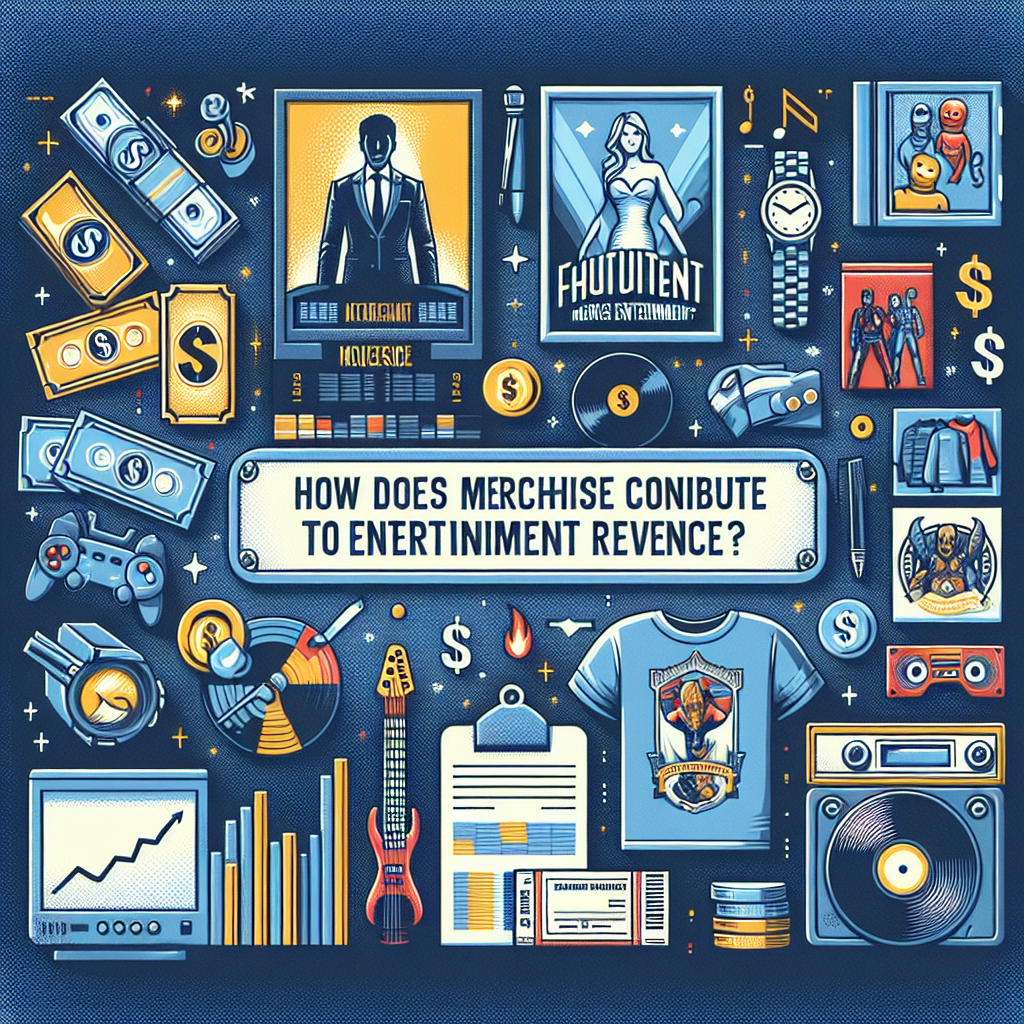Merchandise has long been a staple in the entertainment industry, serving as a vital source of revenue for companies and individuals alike. From music artists and movie studios to sports teams and theme parks, merchandise plays a key role in boosting profits and connecting with fans. In this article, we will explore how merchandise contributes to entertainment revenue and why it is such an important aspect of the industry.
Merchandise is a key driver of revenue for many entertainment companies. On average, merchandise sales can account for up to 25% of a company’s total revenue. This is especially true for industries such as music, sports, and gaming, where fans are often eager to show their support for their favorite artists, teams, or games through the purchase of merchandise.
One of the biggest ways in which merchandise contributes to entertainment revenue is through increased brand visibility. When fans wear merchandise featuring their favorite artists or teams, they are effectively acting as walking billboards for the brand. This not only helps to promote the brand to a wider audience but also creates a sense of community among fans who share a common interest.
In addition to brand visibility, merchandise sales also help to create a more immersive fan experience. Fans are often looking for ways to connect with their favorite artists or teams on a deeper level, and purchasing merchandise allows them to do just that. Whether it’s a concert t-shirt, a team jersey, or a limited-edition collectible, merchandise offers fans a tangible way to show their support and express their love for their favorite entertainment brands.
Furthermore, merchandise can also serve as a valuable source of revenue beyond the initial sale. Many entertainment companies offer exclusive merchandise items or limited-edition releases, which can create a sense of urgency among fans and drive up sales. Additionally, merchandise can also be leveraged as part of larger marketing campaigns or promotions, further boosting revenue for the company.
Overall, merchandise is a key component of entertainment revenue, helping to drive sales, promote brand visibility, and enhance the fan experience. Without merchandise, many entertainment companies would miss out on a significant source of revenue and the opportunity to connect with their fans in a meaningful way.
FAQs:
Q: How can merchandise help to boost revenue for entertainment companies?
A: Merchandise sales can account for up to 25% of a company’s total revenue, making it a vital source of income for many entertainment companies. By offering fans a way to connect with their favorite artists or teams through the purchase of merchandise, companies can drive sales and increase brand visibility.
Q: What types of merchandise are most popular among fans?
A: Popular types of merchandise among fans include t-shirts, hoodies, hats, jerseys, and collectibles. Fans are often looking for ways to show their support for their favorite artists or teams, and these types of merchandise allow them to do just that.
Q: How can entertainment companies leverage merchandise to create a more immersive fan experience?
A: By offering exclusive merchandise items, limited-edition releases, and merchandise as part of larger marketing campaigns, entertainment companies can create a more immersive fan experience. This not only helps to drive sales but also fosters a sense of community among fans.
Q: What are some examples of successful merchandise campaigns in the entertainment industry?
A: Some examples of successful merchandise campaigns in the entertainment industry include tour merchandise for music artists, team jerseys for sports teams, and limited-edition collectibles for gaming companies. These campaigns have helped to drive sales, promote brand visibility, and enhance the fan experience.
